
How to create a privacy hedge?
Our tips for successfully setting up and protecting yourself from prying eyes or overlooking neighbours for the long term.
Contents
Are you looking to install a privacy hedge at home to create some intimacy in a space, conceal a view, or hide an unsightly sight? Planting bushes as a hedge is a great solution for creating an effective, attractive, and long-lasting green screen.
So, where to start? We will explore how to choose the plants best suited to your needs, as well as your cultivation requirements.
We will then look at how to plant and maintain your privacy hedge, so you can enjoy a true protective cocoon in your garden or on your terrace with minimal hassle.
Here are our tips for a successful privacy hedge!
Define your needs and desires in advance.
Before creating your privacy hedge, the first step is to ask yourself the right questions.
- What area(s) do you need to protect?
- Do you want year-round protection, or just during the pleasant season?
- What are your growing constraints (soil, climate, exposure)?
- What style of hedge best matches your tastes (monochrome or colourful, classic or rustic, flowering, fruiting, or leafy, etc.)?
The answers to these questions will help guide you towards the bushes that best meet your expectations.
Also, consider in advance the impact that installing a privacy hedge will have on your garden: creating shade (compatible or not with existing plants), altering air flows that may create new windy corridors, root development, etc. These are all factors to understand well, to avoid regretting the location or size of your privacy hedge.
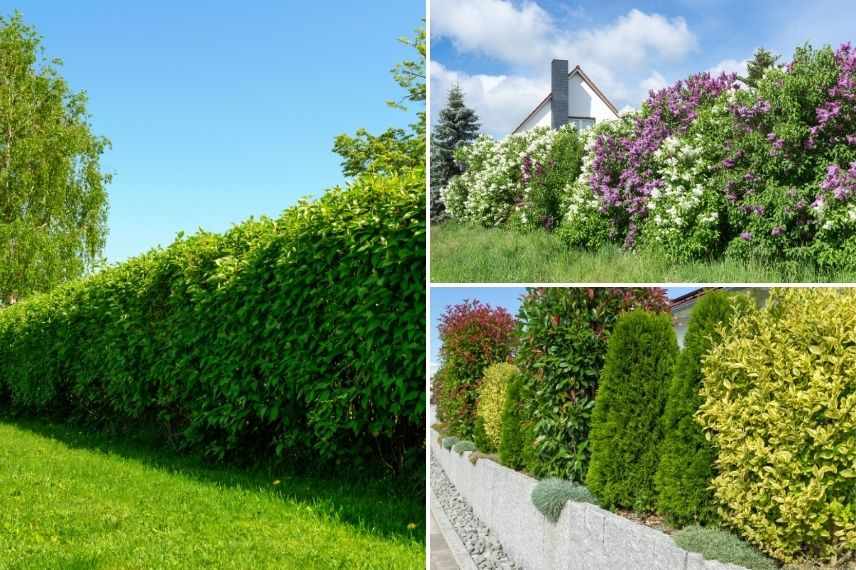 Monochrome, flowering or leafy hedge
Monochrome, flowering or leafy hedge
Read also
How and why to create a windbreak hedge?Choosing Bushes
To create a privacy hedge, the choice of species and varieties is vast. However, once you have answered the previously listed questions, you will have a clearer idea of the plants that are best suited to your project.
And if you prefer not to choose, discover our evergreen and privacy hedge kits, which include several species of bushes perfectly adapted for this use.
Essential Characteristics
To create a plant screen that effectively protects from prying eyes, the bushes must meet several essential criteria:
- fairly rapid growth, so you don’t have to wait several years
- sufficient height (at least human height), but not too much (2 metres is generally sufficient)
- dense and thick foliage
- ease of cultivation
- evergreen foliage, if you want a hedge that obscures all year round
Single-species or Mixed Hedge?
Single-species hedges consist of only one species of bushes. They are the most classic type, typical of French gardens, often trimmed to a straight line.
They are generally made up of popular species of bushes, such as cherry laurel, thuja, or cotoneaster.
Advantages:
- perfect obscuration
- clean and homogeneous plant wall
- identical maintenance along the entire length
Disadvantages:
- in case of disease or pest infestation, the entire hedge can quickly be affected and decline
- regular maintenance to keep a tidy hedge
- faster soil depletion due to monoculture
- monotonous and rigid style
- hedge less favourable to biodiversity
In contrast, a mixed hedge consists of several different species of bushes. It can be evergreen or offer a mix with deciduous or marcescent species (whose foliage dries while remaining on the plant).
Advantages:
- in case of disease or pest infestation, less risk of losing the entire hedge
- promotes biodiversity in the garden, providing shelter and cover for wildlife and beneficial insects
- multifunctional: inspired by permaculture principles, it can serve multiple roles (producing edible fruits, flowers, biomass, etc.)
- natural style
Disadvantages:
- specific maintenance for each species
Some Examples of Species for a Beautiful Privacy Hedge
Depending on your soil constraints (clay, sandy, poor, calcareous…), climate (harsh winters, sea spray, winds, pollution…) and exposure (sun, shade…), here are some ideas for creating an effective screening barrier.
- For a seaside garden: Japanese spindle, the escallonia, the Mexican orange blossom, the pittosporum, or even the griselinia, which withstand sea spray well.
- For cold climates: the Himalayan cedar, the viburnums, the bamboos, and the aucuba, which are quite hardy.
- For terraces and balconies: the Mexican orange blossom, the fargesia, and the escallonia, which can be grown in pots.
- For small spaces, climbing plants like ivy, honeysuckle, or star jasmine, which will simply require a tall support like a trellis or mesh.
- For an urban garden: the oleaster, the fargesia, cotoneaster, and laurustinus, which are resistant to pollution.
- For a hedge that only obscures during the good weather: the miscanthus, the hornbeam, the dogwood, and the dwarf beech, with semi-evergreen, deciduous, or marcescent foliage.
- For a protective hedge (to avoid near passageways): the barberry, the mahonia, the pyracantha, and the sea buckthorn, with their sharp thorns.
- For a very colourful touch, the bright foliage of photinias or variegated varieties of pittosporum and aucuba.

Aucuba, Escallonia (photo L. Enking), Pittosporum, Pyracantha, Fargesia, Photinia, and Hornbeam (Carpinus betulus)
Discover other Hedge shrubs
View all →Available in 0 sizes
Available in 1 sizes
Available in 1 sizes
Available in 1 sizes
Available in 1 sizes
Available in 1 sizes
Available in 1 sizes
Available in 2 sizes
Available in 1 sizes
Available in 1 sizes
Planting a privacy hedge
A hedge is a line of bushes that delineates a garden. However, for this alignment to effectively serve its purpose and properly conceal any views, we invite you to follow a few simple principles at the time of planting.
Suitable Period
Once you have chosen the location for your hedge, proceed during the right planting period, usually in autumn, to best encourage the rooting of the plants. However, the optimal period also depends on the condition of your bushes.
Bushes with bare roots, as well as those in clumps, generally have the best chances of quick recovery. They should be planted in autumn, around October-November, outside of frost periods. Ensure that planting occurs as soon as possible after purchase or receipt, and practice root coating.
Potted or container-grown bushes can be planted almost all year round, except during frost or drought periods. They can wait before being planted. Just make sure to soak them in a bucket of water to rehydrate the root system just before planting.
For further information, feel free to consult our sheet “Hedge bushes: bare roots, clumps, pots, potted bushes… What to choose?”.
Planting Distances
To achieve a screening effect, the hedge must be dense throughout its height. Smaller areas can suffice with a single row of bushes, planted fairly closely together.
Larger areas will require a thickness of at least 60 to 80 cm. Ideally, you should plant the bushes in 2 rows:
- either in staggered or zigzag formation, which allows more space for the plants to develop well in tighter areas
- or in a row, with shorter varieties in front and taller or evergreen ones behind, if you have ample space
The distances between the plants depend on their spread at maturity and the species concerned. Generally, it is recommended to leave at least 50 to 60 cm of spacing between each hedge bush.
In addition to these distances between your plants, do not forget to respect the legal distances from the road, your neighbours, nearby buildings, etc. These are generally at least 50 cm from the property line for a bush, but much more for a bush exceeding 2 metres or for a tree.
To go further, find all our advice in the articles “Hedges, bushes, trees: what are the planting distances?” and “Planting trees and bushes: what does the law say?”.
Planting in Practice
- Prepare your planting area by weeding and loosening the soil if necessary.
- Dig a trench or holes that are approximately 1.5 times deeper and wider than the root system of your plants. Add well-matured compost or manure to enrich the soil and promote growth.
- Install your bushes upright and stable in the trench or holes. It is possible to stake them, especially if they are placed in a windy location.
- Backfill, then firm the soil around the plants and water generously.
- Protect the base of the plants with a mulch of leaves, pine bark, etc. This will prevent the growth of adventive plants while protecting the young plants from drought or cold.
Additionally, find more detailed advice in the article “How to plant a hedge?”
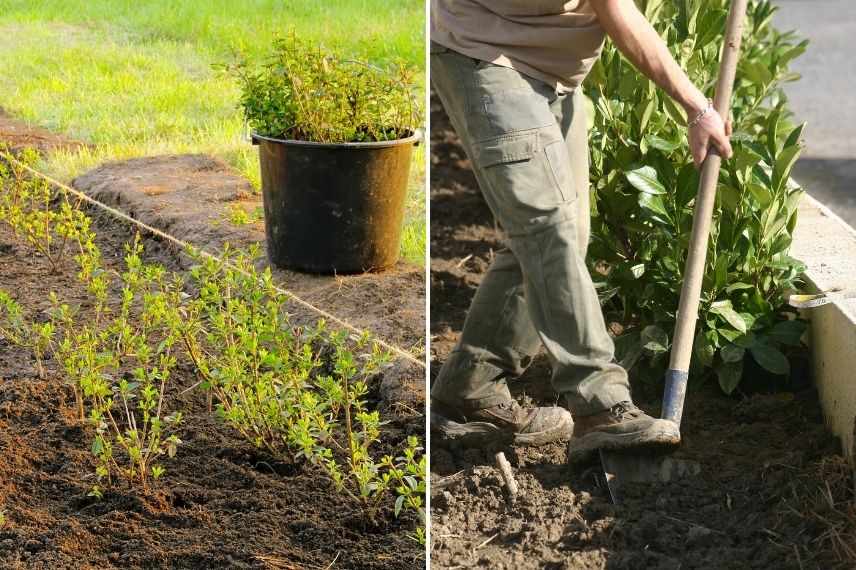
Zigzag planting in two rows or in a row
Maintaining a privacy hedge
If, as we advised, you choose bushes that are easy to grow, their maintenance should not be too demanding. The energy and time spent will mainly depend on the type of hedge concerned.
Pruning
Free-form hedges can be left natural, while a traditional hedge will require regular maintenance to maintain its harmonious shape.
Generally, once or twice a year, in autumn and spring, pruning will help achieve a nice uniformity and prevent the bushes from growing in a disorderly manner.
If you have chosen deciduous or flowering bushes, it may be necessary to remove dead leaves and faded flowers at the end of the season.
Note that from mid-March until the end of July, birds are in their nesting period. The LPO (League for the Protection of Birds) therefore advises avoiding any hedge trimming during this time.
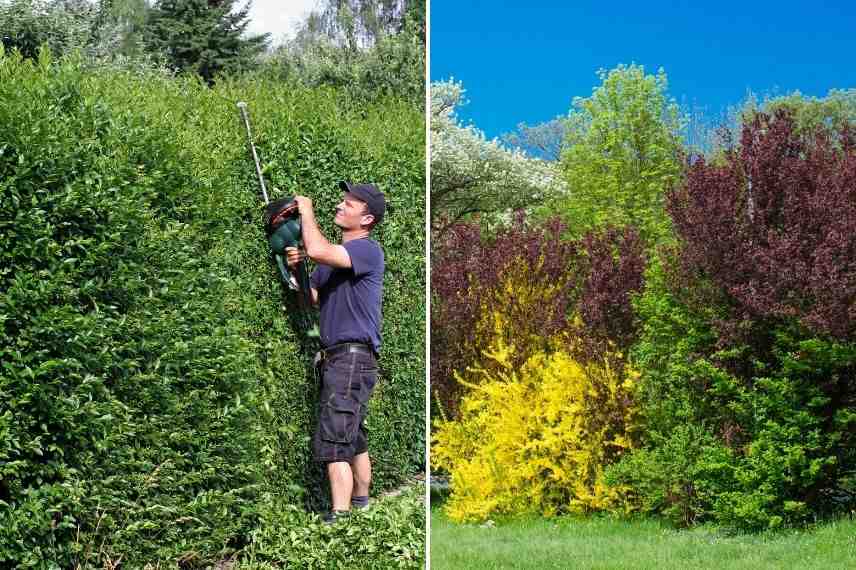
Trimmed hedge or free-form hedge
Watering
During the first two years of growth at least, watering should be regular, as the roots of the bushes are not yet sufficiently developed to draw water from the soil independently. Increase watering during dry periods.
Feel free to install an automatic watering system, which will save you a lot of time and energy in the long run.
Other Care
In autumn, you can add a handful of decomposed household compost or fertiliser for trees and bushes to stimulate the growth of your plants.
The mulch placed at the base of your bushes will gradually disappear over the months or years. You can renew it, or opt for the cultivation of low perennial plants, which will combine protection and lasting aesthetics.
- Subscribe!
- Contents


































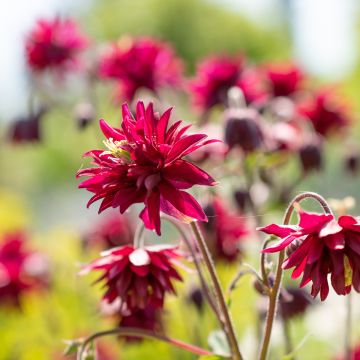

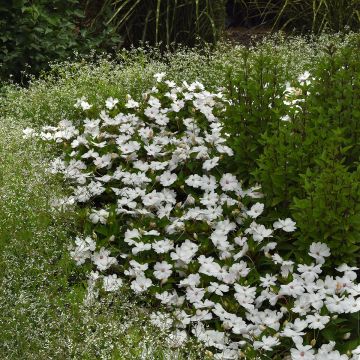
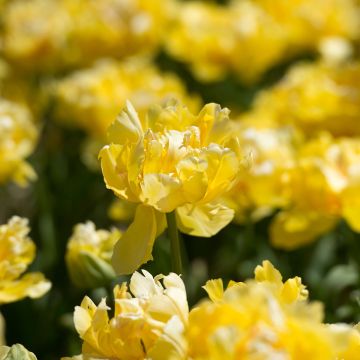
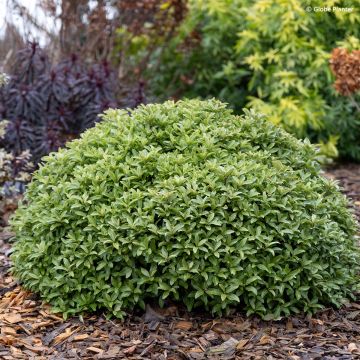


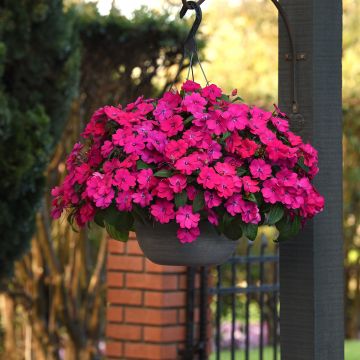
Comments